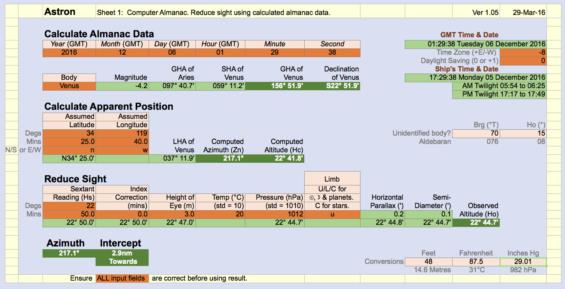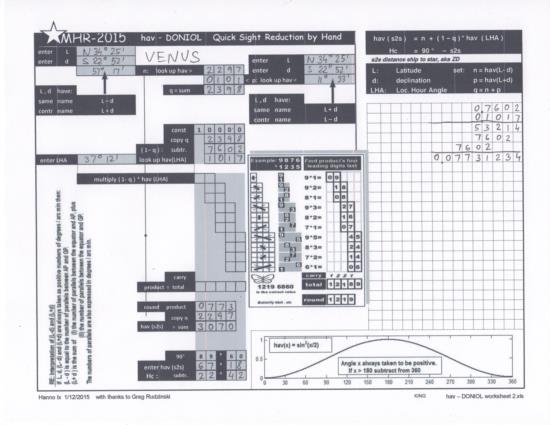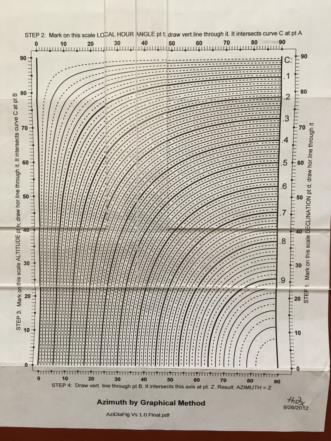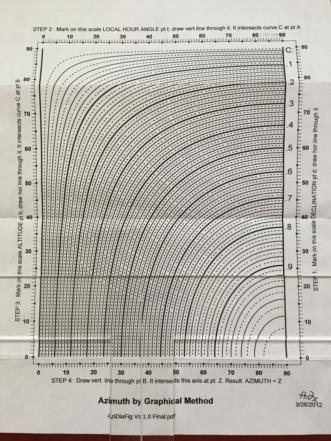
NavList:
A Community Devoted to the Preservation and Practice of Celestial Navigation and Other Methods of Traditional Wayfinding
From: Stan K
Date: 2016 Dec 13, 17:08 -0500
From: Peter Hakel <NoReply_PeterHakel@navlist.net>
To: slk1000 <slk1000@aol.com>
Sent: Mon, Dec 12, 2016 8:20 pm
Subject: [NavList] Santa Barbara 2016: Venus sight
From Excel:
Venus on 2016 December 6, at 01:29:38 UT
GHA: 156° 51.9’
Dec: S 22° 51.9’
Ho: 22° 45’
Hc: 22° 42’
Intercept: 3’ Toward
Azimuth: 217°
Peter Hakel
Attached File:

Attached File:

Attached File:

Attached File:







